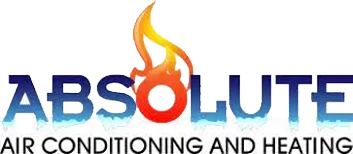HVAC systems play a crucial role in maintaining comfortable living spaces in residential projects. Having a well-functioning HVAC system not only ensures a comfortable indoor environment but also contributes to improved air quality and energy efficiency. Understanding the key components and layout considerations is vital for successful HVAC installations.
Understanding HVAC System Components
HVAC systems consist of several essential components that work together to maintain comfortable indoor conditions. At the heart of these systems are the furnace, air conditioner, and heat pump, each playing a vital role in temperature regulation. The furnace is responsible for heating, utilizing natural gas, oil, or electricity to ensure warmth during colder months. The air conditioner cools the home by extracting heat from the indoor air and releasing it outdoors, helping to maintain a pleasant environment during warmer periods.
Heat pumps offer a versatile solution by providing both heating and cooling functions. They operate by transferring heat from one area to another, making them an energy-efficient choice for many homeowners. Understanding these components helps in selecting the right system to meet the unique needs of each residential project.
Choosing the appropriate components is crucial for optimal performance and energy efficiency. Factors such as the size of the home, climate conditions, and specific comfort requirements must be considered. Different projects may require varying combinations of these components, and our professionals are trained to assess and recommend the best options. Proper selection ensures that the system functions effectively, providing comfort while minimizing energy usage.
Planning the HVAC Layout and Design
Proper planning of the HVAC layout and design is essential to ensure efficient operation and energy savings. An integral aspect of this process is the placement and sizing of ductwork, which distributes conditioned air throughout the home. Correct ductwork size is necessary to maintain balanced airflow, essential for uniform temperature regulation in different areas of the house.
Considerations during this stage include the architectural design of the home, the intended use of each space, and accessibility for maintenance. Strategically placing ducts minimizes energy loss and ensures that each room receives the appropriate amount of air. Poorly designed duct systems can lead to inefficiencies and increased energy costs, underscoring the importance of expert planning.
Additionally, utilizing strategies to optimize system efficiency is beneficial. Incorporating zoning systems allows for individualized temperature control in different areas, enhancing comfort and reducing energy consumption. Sealing and insulating ducts prevent air leakage, ensuring that all conditioned air reaches its intended destination. These considerations ensure that the HVAC system operates at peak performance, providing comfortable living conditions and long-term energy savings.
Installation Best Practices
A successful HVAC installation requires meticulous attention to each step to ensure quality and reliability. Here is a step-by-step approach to consider:
1. Pre-Installation Inspection: Our technicians start with a thorough assessment of the home to identify specific needs and any existing infrastructure that may affect installation.
2. Positioning Equipment: Proper placement of the HVAC components is essential to ensure efficient operation and easy accessibility for future maintenance.
3. Connecting Electrical Components and Ductwork: Securely connect all electrical components, ensuring compliance with safety standards, followed by precise ductwork installation for optimal air distribution.
4. Testing and Calibration: Once installed, systems undergo rigorous testing to verify operational efficiency and ensure all components are calibrated correctly.
Common mistakes can undermine the efficiency and functionality of an HVAC system. Avoid insufficient sizing, as a unit too large or small will compromise comfort and energy efficiency. Improper duct sealing can lead to air leaks, reducing system effectiveness. Our professionals pay close attention to these details to avoid common pitfalls and ensure a smooth installation process.
Post-Installation Evaluation and Maintenance
Post-installation evaluation is necessary to ensure the HVAC system operates at peak performance. Testing and balancing the system involves adjusting airflow and verifying the correct operation of all components. This evaluation guarantees uniform temperature regulation and energy efficiency throughout the residence.
Regular maintenance practices are vital for extending the system’s longevity and ensuring consistent performance. Key maintenance activities include:
- Filter Replacement: Regularly change filters to maintain air quality and system efficiency.
- System Inspections: Schedule routine inspections with our professionals to identify potential issues early.
- Duct Cleaning: Keeping ducts clean prevents dust and debris buildup, which can hinder airflow and system performance.
By adhering to these maintenance practices, homeowners can enjoy a reliable HVAC system that provides year-round comfort and efficiency.
Conclusion
Ensuring the success of an HVAC installation in new residential projects involves understanding the components, careful planning, precise execution, and ongoing maintenance. Each step in the process plays a crucial role in delivering a system that offers both comfort and cost efficiency. Our technicians are dedicated to providing expert guidance and services, ensuring that every installation meets the highest standards of quality and performance.
For top-quality HVAC installation in Palm Springs, trust Absolute Air Conditioning & Heating. Our team of professionals is equipped to handle all aspects of your HVAC needs with the expertise and care you deserve. Contact us today to ensure your home stays comfortable and efficient in every season!





